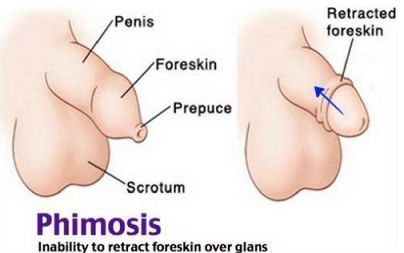Phimosis
What is phimosis?
Phimosis is a narrowing of the tip of the foreskin that does not allow the exposure of the glans.
What causes phimosis in children?
It can be congenital, but in older boys, it is most often secondary to local infections or traumatic preputial retractions that left a fibrous scar.
Is it true almost all babies have phimosis?
Yes. About 96% of male newborns have phimosis. Adhesions between the prepuce and the glans do not allow preputial retraction and exposure of the glans. We call that physiologic phimosis. The adhesions will clear up spontaneously during the first infancy.
When does phimosis need to be operated?
- In older boys, when there is a narrowing of the foreskin that is painful when the glans is exposed. It is like a stenotic ring over the penile shaft. We call it paraphimosis.
- in the presence of a disease of the skin of the glans and/or the prepuce (balanitis Xero-obliterans and pyogenic granuloma)
- If there are inflammations and infections of the skin of the foreskin, glans, and urethral meatus (called balanoposthitis)
- when micturition is difficult with a narrow urinary stream and ballooning of the foreskin
What does it mean "surgery for phimosis"?
It can be a partial resection of the foreskin (resection of the phimotic ring) or total resection of the foreskin (circumcision). In some cases, it can be performed a plasty of the stenotic ring without foreskin resection.
The circumcision in male newborns is it recommended for avoiding urinary tract infections?
During the first year of life, the absolute risk of non-circumcised male infants to develop urinary tract infection is exceptionally low (less than 1%). This does not justify routine circumcision due to medical reasons.


